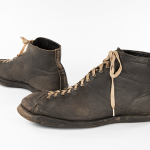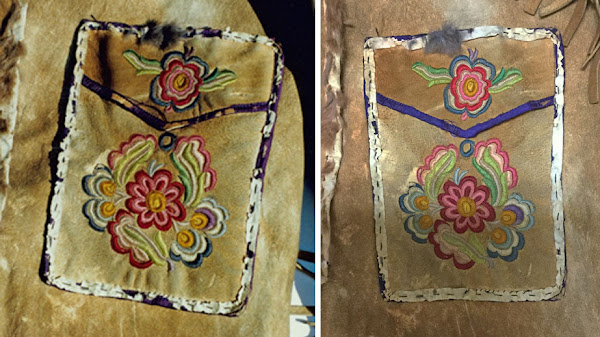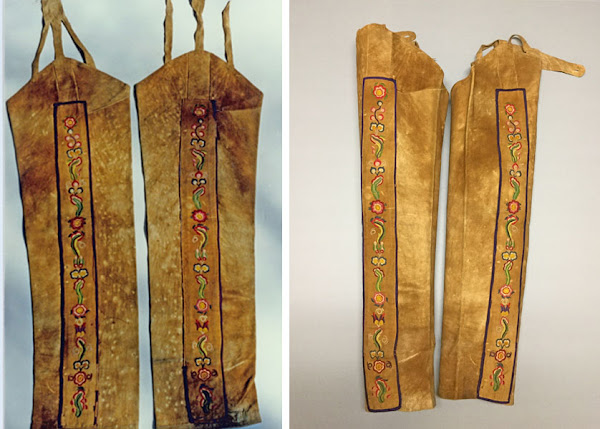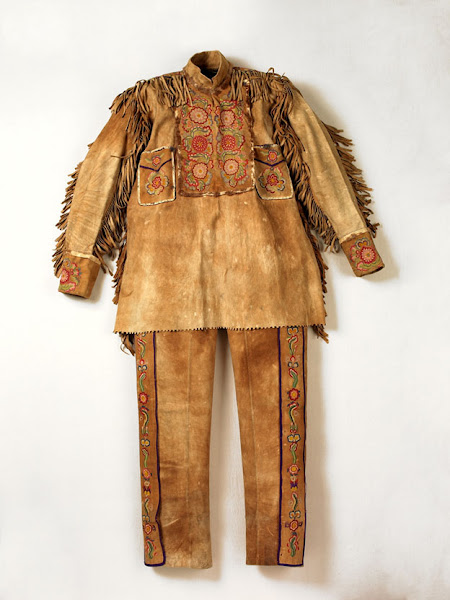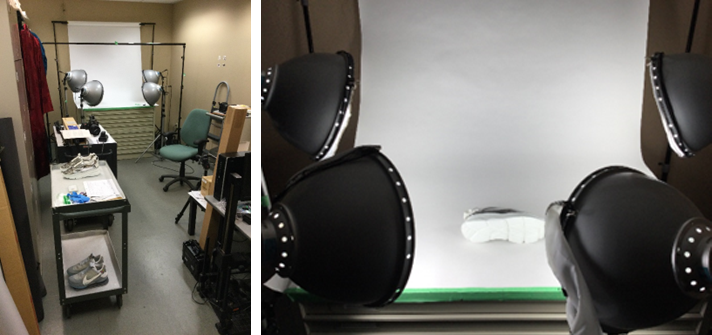In 1989 the BSM acquired a beautifully embroidered jacket with matching leggings. The museum collects clothing to display with footwear to help the visitor better understand the overall look of a complete outfit. This piece of clothing was made in the 1870s by a highly accomplished Cree/Métis artist from Norway House, a community in northern Manitoba and the home of the Norway House Cree Nation.
The coat and leggings are made of smoked deerskin that provides a warm palette for the intricate silk thread embroidered floral design. The pockets and yoke of the jacket are trimmed with muskrat fur. The decoration on the leggings echo the same eye catching design and are bordered with bands of purple silk. The extension at the top of each legging is referred to as a garter through which a belt passes to hold each leg in place.
At some point in its past, moths had a feast devouring the skin of the muskrat trim creating large holes and significant fur loss. There was also considerable loss of the purple silk borders. Historically, metallic salts were added to silk by the manufacturers during processing. Fabric was sold by weight and these salts increased the weight of an otherwise light material. Over time these salts undermine the stability of the silk causing its deterioration. About 80% of the purple silk trim on both the jacket and the leggings had disintegrated.
It was felt that before the outfit went on display, replacing the missing silk would enhance the viewers’ visual experience. There were loose pieces of skin surrounding areas of significant fur loss that needed to be stabilized.
The holes in the skin were backed with Japanese paper toned with chalk pastel to achieve the appropriate colour. Patches of untoned paper were adhered to the underside of each hole; then a toned section of paper was feathered along its edges with the tip of a pin. This step helps the upper patch visually blend in when it is glued to the top of the under patch.
Left: The sides of the pocket have holes in the skin accompanied by a loss of ribbon that passes between the embroidered floral design. Right: New silk replaces missing sections of purple ribbon; Japanese paper supports the missing pieces of skin.
I was fortunate enough to source a silk fabric the same weight and colour as the original. Finding the same colour is virtually impossible; usually the best one hopes for is a fabric of similar weight that can be dyed. Fibres were teased from the silk to use as threads and with a fine beading needle the new ribbon was attached to the preexisting stitches.
Left: The leggings before the silk ribbon was replaced. Right: Leggings with the new ribbon sewn in place.
Hopefully this conservation treatment serves to honour the original intention of the artist who created this beautiful outfit.


